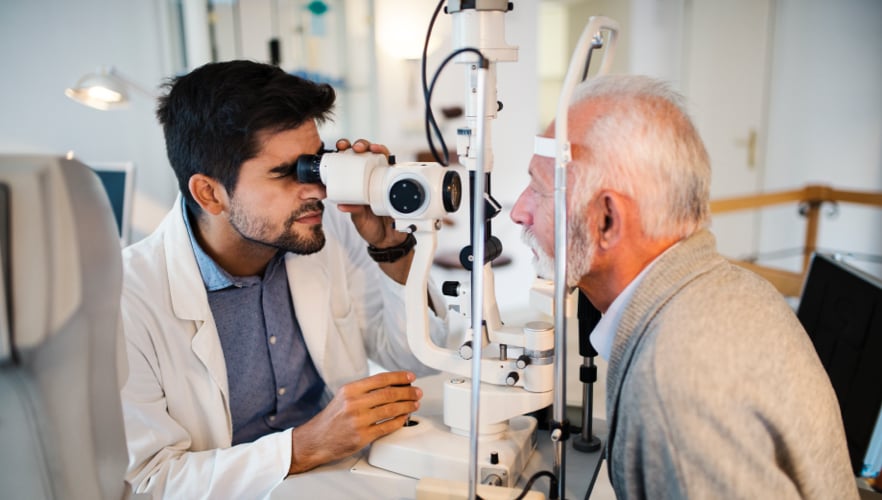Diabetes affects over 10% of adults in the U.S.A and can have a lasting impact on the vision of both type 1 and type 2 patients. Hear from the eye care experts at Bailey Weber Wisner on how diabetes can affect the eyes and how those complications can be treated.
Cataracts
As you age, the lens of your eye naturally clouds, becomes less flexible and thickens, which can cause problems with your ability to see. In patients with poorly managed diabetes, these effects are accelerated, and cataracts develop more quickly, so cataracts are a common vision complication in patients with diabetes.
Symptoms include:
- Clouded vision
- Seeing halos around light
- Double-vision in one eye
- Light and glare sensitivity
Fortunately, treatment for cataracts is safe and effective. A doctor will remove the cataracts and replace the lenses of the eye with artificial ones.
Glaucoma
Glaucoma is the name for a group of diseases that can cause damage to the optic nerve, potentially causing permanent vision loss and even blindness if not treated early. Diabetes roughly doubles the risk of developing glaucoma.
Symptoms include:
- At first, glaucoma tends not to have symptoms – often leading to people not knowing that they have it. This is one of the reasons it is recommended that people with diabetes have annual eye exams to check for signs of glaucoma.
- As the disease progresses, patients may notice a change to or loss of vision in their peripherals. The change can be so slight that it is hard to detect before the damage becomes permanent.
Treatments for glaucoma can prevent further damage to the eye, but they cannot repair the damage that has already been done, which is why it is so important to catch and treat glaucoma as early as possible. Prescription eye drops and laser surgery are often the first treatments given to patients with glaucoma. These treatments aim to reduce the pressure on the optic nerve, preventing any further damage. If the laser surgery and prescription medications aren’t working, your doctor might suggest surgery to help drain fluid from the eye and relieve pressure on the optic nerve.
Diabetic Retinopathy
Diabetic retinopathy is caused by damage to the small blood vessels that supply the retina and the inner layer of the eye behind the retina. It can cause both temporary and permanent vision damage and even blindness. People with diabetic retinopathy may also develop diabetic macular edema.
Symptoms include:
- At first, patients may not notice any symptoms of diabetic retinopathy, another reason that diabetics should have frequent eye examinations. As the disease progresses, you might notice:
- Blurred vision
- An increase in floaters or their severity
- Dark spots or empty areas in your vision
- Partial vision loss
There are a variety of medicines to treat diabetic retinopathy, as well as laser surgery options. These treatments can halt the progress of diabetic retinopathy and even reverse some of the damage done. To learn more about diabetic retinopathy, read our recent blog.
Diabetic Macular Edema
Diabetic Macular Edema is a complication of diabetic retinopathy and is caused by damage over time to the small blood vessels of the retina—which can cause the surrounding tissue to swell, potentially causing irreversible vision loss and even blindness.
Symptoms include:
- Blurred vision
- Double vision
- A sudden increase in the visibility of floaters
- Vision loss
Like diabetic retinopathy, treatments for diabetic macular edema include medication, laser treatment, and, in some cases, surgery. In order to reduce your risk of diabetic retinopathy and diabetic macular edema, we recommend annual routine eye exams if you are diagnosed with diabetes. You should also seek out an additional appointment if you notice any acute changes to your vision as a diabetic.
